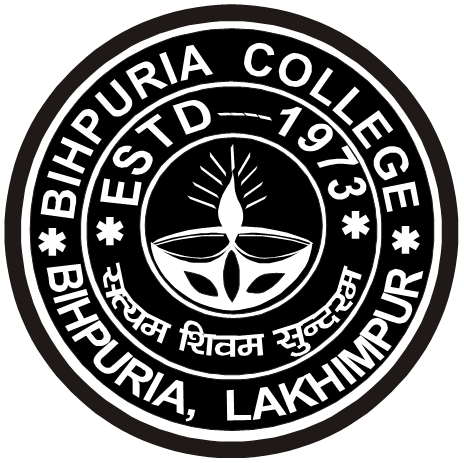ECONOMICS
EVALUATIVE REPORT OF THE DEPARTMENTS
Est. 1973
H.S. & B.A.
(CBCS & Non-CBCS)
Total number of class rooms : Three (03)
There is a
departmental library with near about 200 books.
No. of Faculty : Four
(04) (Two Vacant)
There is a departmental library with near about 200 books.
No. of Faculty : Four (04) (Two Vacant)
HOD
Mr Arup Kumar Sarma, M.A. &M. Phil, Assistant Professor,
Other Faculty:
Ms. Daisy Basistha, M.A, (Econometrics, Demography), Assistant Professor,
Ms. Daisy Basistha, M.A, (Econometrics, Demography), Assistant Professor,
Mission and Vision
Mission: To offer learning opportunities to the learner and make them able to feel their importance to the economy and environment.
Vision: To access the optimum level of learning especially in the field of Economics
Programme Outcome
Having being graduated in Arts and taking Economics as prime subject in the course curriculum one can easily understand the performance and challenges of the primary, secondary and the tertiary sectors of the economy. It will enable the learner to understand the conceptual issues of poverty and inequalities in the greater perspectives. Completing the programme in Economics means acquision of some basic concepts relating to monetary and financial marketing with special reference to Indian financial market, which will enable the learners to relate the conceptual issues to the real life situations. Also help the learners to know the learners fiscal policy which are designed for both developed and developing economies. It provides the opportunity to learn some important concepts of environmental economics along with the solution to the environmental problems.
Course Outcome
The knowledge of Economics is understood most essential in today’s world. It is because understanding the concepts of economics can enhance the economic reasoning of the learners to analyze the behavioral pattern of different economic agents, to understand the decision making process and also to provide them the opportunity to deal with real life problems. In modern days there is wide range of application of statistics and mathematics in economics that enriches scientific thinking of the learners and also become useful in research related works.
Programme-wise
Student Teacher Ratio
Students profile – academic year wise
Diversity of students
Departmental
Result
student progression : From UG to PG
Employed
List the teaching methods adopted
by the faculty for different programmes:
The department uses the conventional method of teaching such as lecture method, discussion method and question-answer methods along with assignments, seminars and interdisciplinary approach of teaching learning.
Department ensure that programme objectives are constantly met and learning outcomes monitored
By arranging internal( sessional) examination in each semester
By organizing group discussions and seminars in each semester.
Highlight the participation of students
and faculty in extension activities with details.
Socio-Economic
study in flood affected areas of Majuli
Field study on
financial inclusion in Pichala DeoriGoan
Field study on
feasibility of NHPC on Subanshiri River.
Extension activity for women empowerment through self-help group at Dusutimukh LP School
Strengths Weaknesses Opportunities Challenges (SWOC) :
Strengths:
The department of Economics tries to
make qualitative contribution to the field of Economics as well as to the
community.
The department strives to reach
standards of excellence in teaching learning process.
The faculties always motivate the
students for all round development.
Weakness:
Lack of digital infrastructure can be
the main weakness of the department.
Dearth of mathematical background among
the students may be another weakness.
Opportunities:
Remedial classes of mathematics may be
arranged for the students as bridge course.
In campus employability may be
encouraged as the subject of economics receives wide applicability.
Reputed national and international
journals may be subscribed.
Creating economic awareness among the
people of the nearby communities.
Challenges:
Maximum numbers of students usually come
from non- mathematical background which stands as a major hurdle in front of
the faculties.
Finding out quality text books in
regional language has been the challenge of the department.
Inadequate availability of learning resources can also be treated as the another challenge of the department
Future plans
1. In the near future the department would like to organize an in campus employment drive for the students.
2. Distinguish faculties from renowned
institutions may be invited occasionally.
3. The department has a plan to organize
national/ international seminar on current socio-economic issues.
